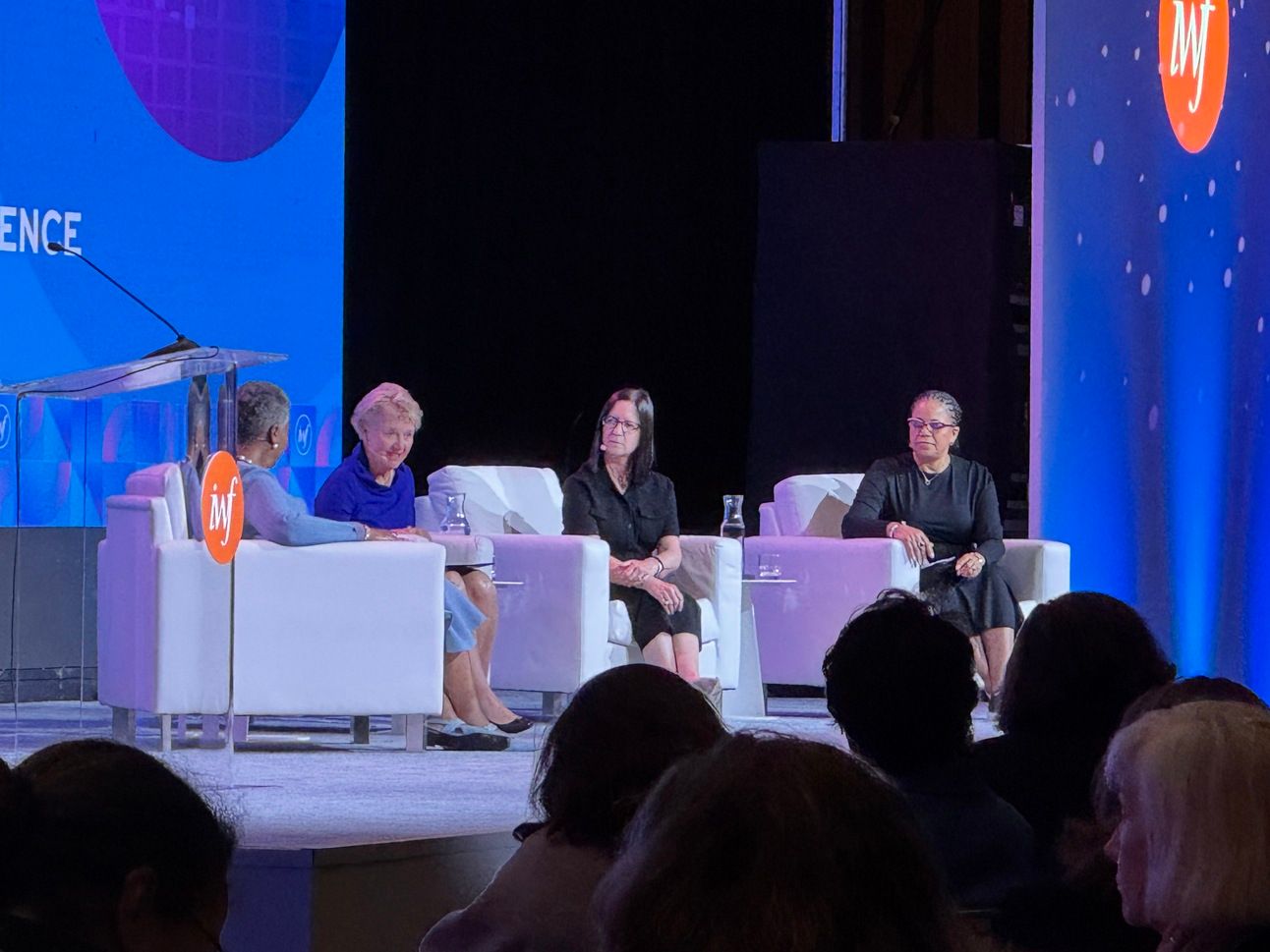
Barbara Faulkenberry (second from left) and Yvette Hollingsworth Clark (far right) at the International Women’s Forum World Leadership Conference in Seattle in May 2025. | Photo by Cambrie Juarez, Formidable Inc.
What you probably already know: History is full of people who exemplified the importance of taking risks to unlock potential, but the modern age presents risks that have grown in complexity and number compared to those of previous eras. Every day, corporate leaders must react to changes in norms that have been in place for decades. How prepared are they to navigate the ever-shifting economic, geopolitical, environmental, and technological landscape we live in? A recent poll carried out by the International Women’s Forum (IWF) asked its members that question: 48% said they were prepared for emerging risks, 25% said they needed more information, and the rest expressed uncertainty. As an independent director and retired major general in the U.S. Air Force, Barbara Faulkenberry shared her unique perspective on risk management at the recent IWF World Leadership Conference. She was joined by Yvette Hollingsworth Clark, executive vice president and chief compliance officer for State Street Corporation. They said risk management starts with analysis.
The process: Faulkenberry said it’s important to first zoom out to grasp the bigger picture and anticipate threats that may be lurking on the horizon. This includes analyzing how theoretical disruptions could impact business, which can be a daunting task considering changing domestic and international relations, combined with the spread of disinformation. The second step, Faulkenberry said, is to develop a framework to process the information. “The military uses red teaming and war games to put people in the adversary's position so we can think through from the [adversary’s perspective]. This is a great idea for corporate boards. You ought to have a red team of a couple of board members that think through what could go wrong with that [merger and acquisition],” she said. The third step is assessing dependencies upon supply chains. Then it’s time to align risk tolerance with a strategy. “Figure out where you can take risks and where you can handle uncertainty, but make sure you are safeguarding your most valuable resources,” Faulkenberry said.
What it means: For companies with international operations, it’s crucial to consider what Hollingsworth Clark called “macro issues in the environment” and how they could impact stakeholders or staff. “State Street happens to have about 50% of its employees in India, so we have to care for where we have a concentration of employees. Really think broadly to make sure you're not too U.S.-centric, that you're caring for all the constituents in your universe,” she said. Armed conflict is currently the number one risk followed by extreme weather events, geoeconomic confrontation, and misinformation/disinformation, according to the World Economic Forum’s 2025 Global Risks Report. Armed conflict ranked eighth in the 2024 edition of the report. “The world sometimes feels like it's on fire. So that's kind of symptomatic of a declining international order. Norms are being violated that we never thought would be violated,” said Faulkenberry. “And then the high amount of disinformation that’s out there, when people don’t believe the ballot box will adequately reflect their views, they do crazy things.”
What happens next: Hollingsworth Clark said the skillsets that are needed to assess today’s risks have changed in recent years. “A cyber threat today is not the same as it was five years ago,” she said. “I’m definitely hiring different teams now. I did not need an [Environmental, Social, and Governance] compliance team five years ago; I need one now.” As the pace of extreme climate events, economic tensions, and technological advances accelerates, leaders need to prepare to meet long-term risks much sooner than they originally anticipated. But there is still room for opportunity despite uncertainty and disruptions. “Today's environment demands a different kind of leadership. You can imagine your people are challenged, they are reading the news, they feel uncertain, they don't know. So it really takes people-centered leadership to not only reassure your employees, but to let them know that there are opportunities,” said Faulkenberry. “Let’s all start thinking about the positive aspect of that risk.”



